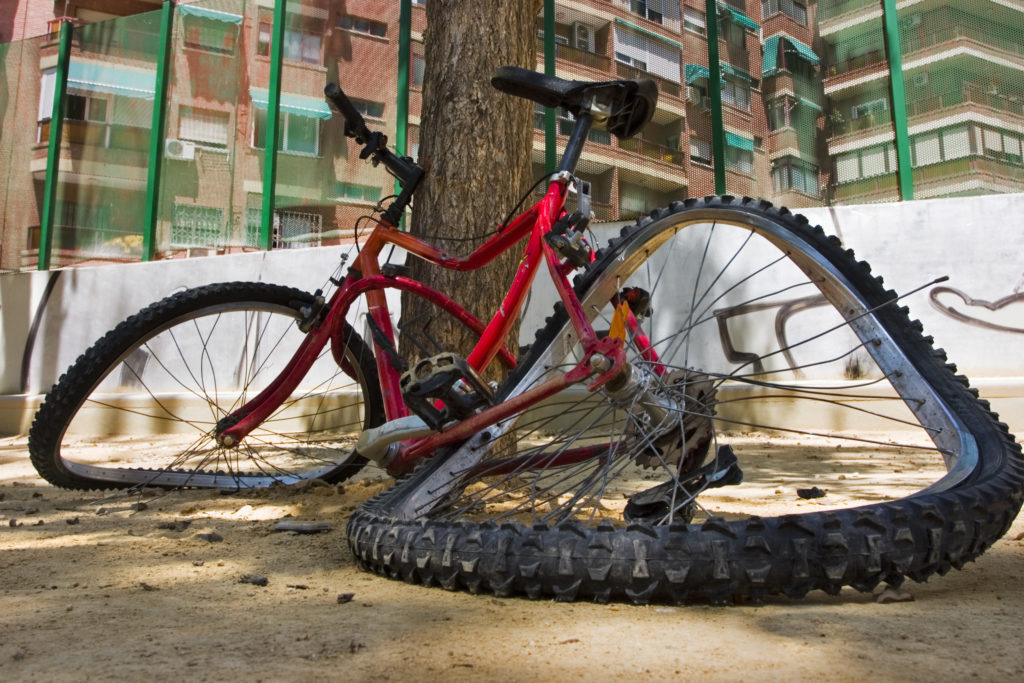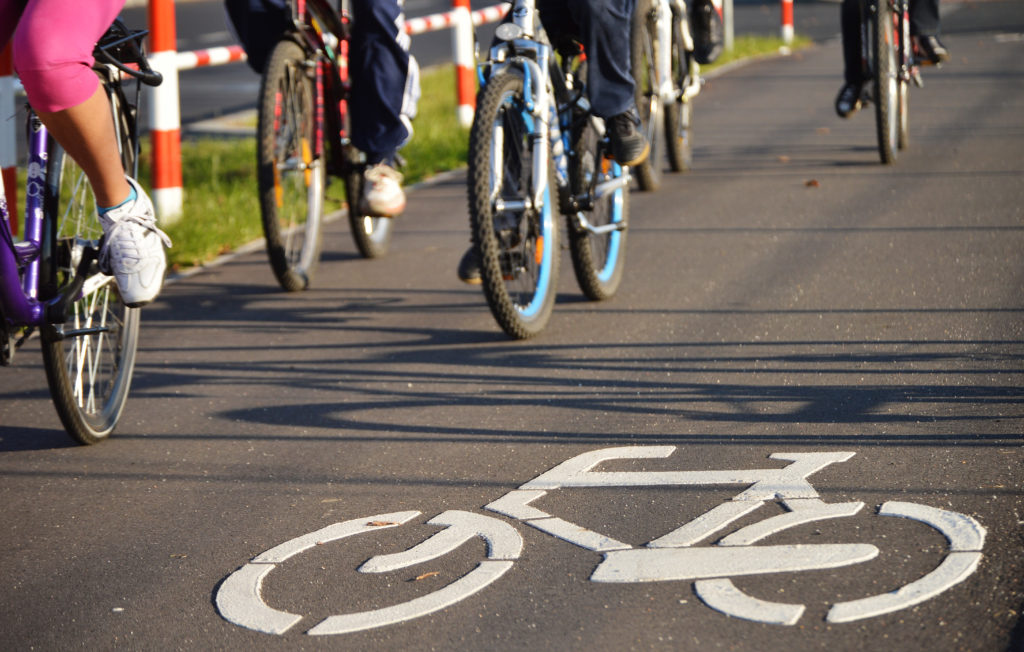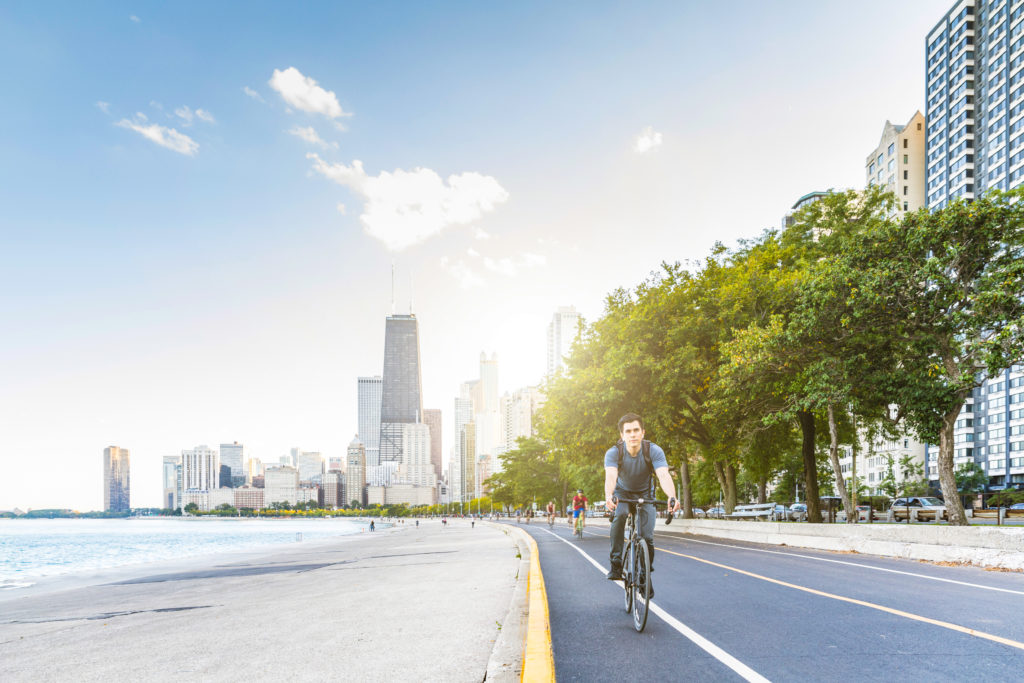
One of the first things an attorney does when investigating a case involving injuries is determining who is responsible for what happened. This week a 32-year-old man was struck by a hit-and-run driver that was traveling westbound along the 400 block of Grand Avenue after 1:00 a.m. on Tuesday. Police are still searching for the motorist that was seen on surveillance footage traveling quickly past the cyclist before striking him off camera. From the video, it appears that the car was speeding. The man is critically injured.
Supposing this irresponsible motorist is not caught, what recourse does the injured bicyclist or his family have in paying for medical bills, lost wages, and other damages? Isn’t that what insurance is for? Illinois law does require motorists to carry uninsured motorist coverage in case they are injured in a crash by an uninsured driver. This type of insurance is meant to cover you and your whole household even if you, your spouse, or a child are walking or riding a bike. If an injury is caused by an uninsured driver or by a hit-and-run driver, you should file a claim with your car insurance company.
What if I don’t own a car?
Suppose you are living green in Chicago. You don’t have any drivers in your household. You take ride share services, taxis, bicycles, scooters, roller-skates, or just your walking shoes to get from point A to point B. I imagine the savings would be astronomical when you take a car, gas, and maintenance out of your monthly budget. But then what happens if a negligent driver causes you to get hurt when you are riding a Divvy bike, for instance?
Does Divvy have its own insurance policy?
No. Divvy doesn’t operate like a rental car company that gives its customers the option of purchasing insurance with their rental. In fact, the Divvy website has a pretty extensive limited liability and indemnification agreement in their terms of use. Whether or not those provisions will hold up in court is another issue. But what about insurance coverage? There may be other sources of coverage that apply. If you find yourself in the unfortunate position of having been injured by an uninsured driver, and you don’t have any auto coverage of your own, you should contact an experienced personal injury attorney to help you investigate your options.
Should Divvy offer insurance?
Yes. Perhaps Divvy doesn’t want to add the option of purchasing insurance coverage to its business model. It’s less expensive that way. However, it may be helpful to give customers the choice considering that bicycles in Chicago share the same roads that cars, trucks, and vans use. Especially when considering that people who rely on public transportation to get around the City who aren’t covered by an auto policy could be left to pay their own medical bills if they were ever injured by a negligent driver and not due to any fault of their own.
Normally, the at-fault driver’s insurance policy is supposed to cover damages caused in a car crash. By law, Illinois has a minimum liability insurance policy requirement of $25,000. Anyone who’s been to the emergency room in the last decade will know that medical bills add up quickly. If a person has broken bones, needs a CT scan, or is hospitalized for even a short period of time, $25,000 may not be enough to even cover the initial treatment after a car crash.
This is why it’s incredibly important to spend as much as you can afford on auto coverage. The price of insurance is relatively cheap compared to the amount of coverage available, and compared to medical bills and lost wages, it’s better to have more coverage than to be in a position where the damages caused by a crash exceed the available insurance coverage limits.
For example, imagine if a man in his thirties who is married with 3 kids is walking across the street and gets tragically struck down by a car that runs a red light because the driver is either drunk, on his phone, or just not paying attention. If both the victim and the negligent driver have only $25,000 in auto insurance coverage, the family who lost their husband and father may not be able to recover more than that minimum policy amount from the at-fault driver. Only $25,000 for such an immense loss.
Similarly, if the crash was a hit-and-run, the pedestrian’s uninsured motorist coverage should apply. If the pedestrian only has $25,000 in coverage we have the same horrible circumstance. Not to say that any amount of money could replace a person, but not having enough coverage to pay medical or even funeral expenses just adds insult to injury.
The goal, of course, for any policy maker or member of the community should be to work towards a transportation system that eliminates crashes and the injuries that result from them. Until we get there, we should not leave people with no recourse just because they don’t own a car and subsequently have no reason to buy auto insurance. If Divvy doesn’t start offering insurance coverage for injuries that result from crashes, lawmakers should require it so that no one is left without options after a tragedy.




